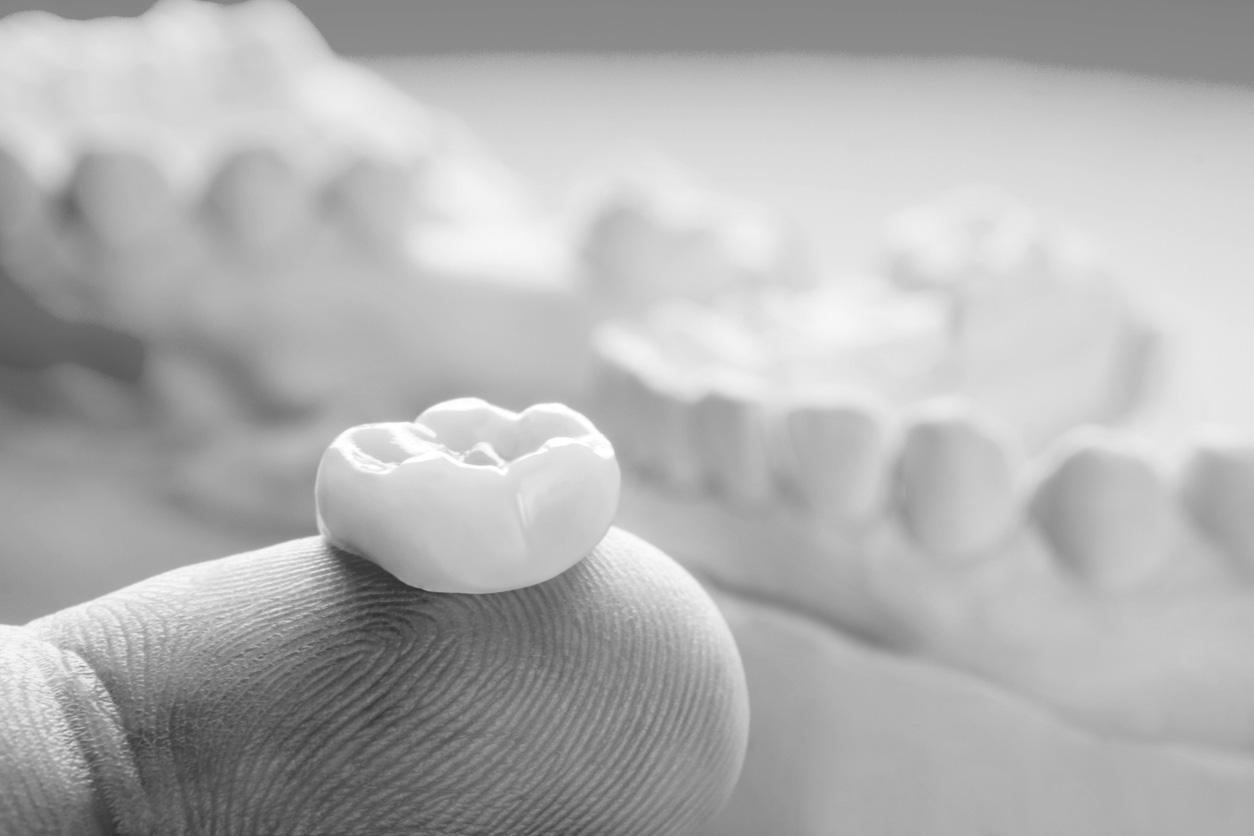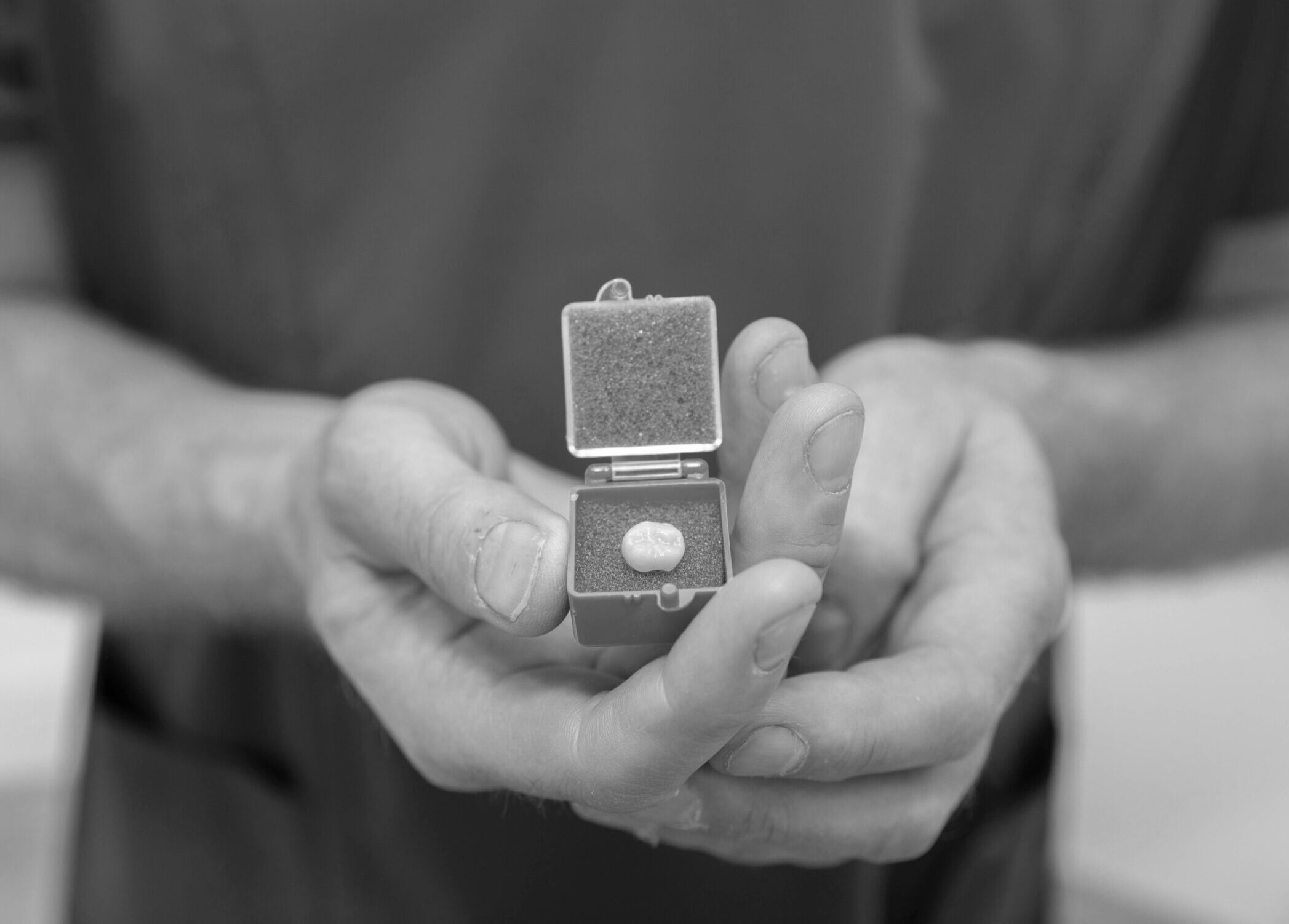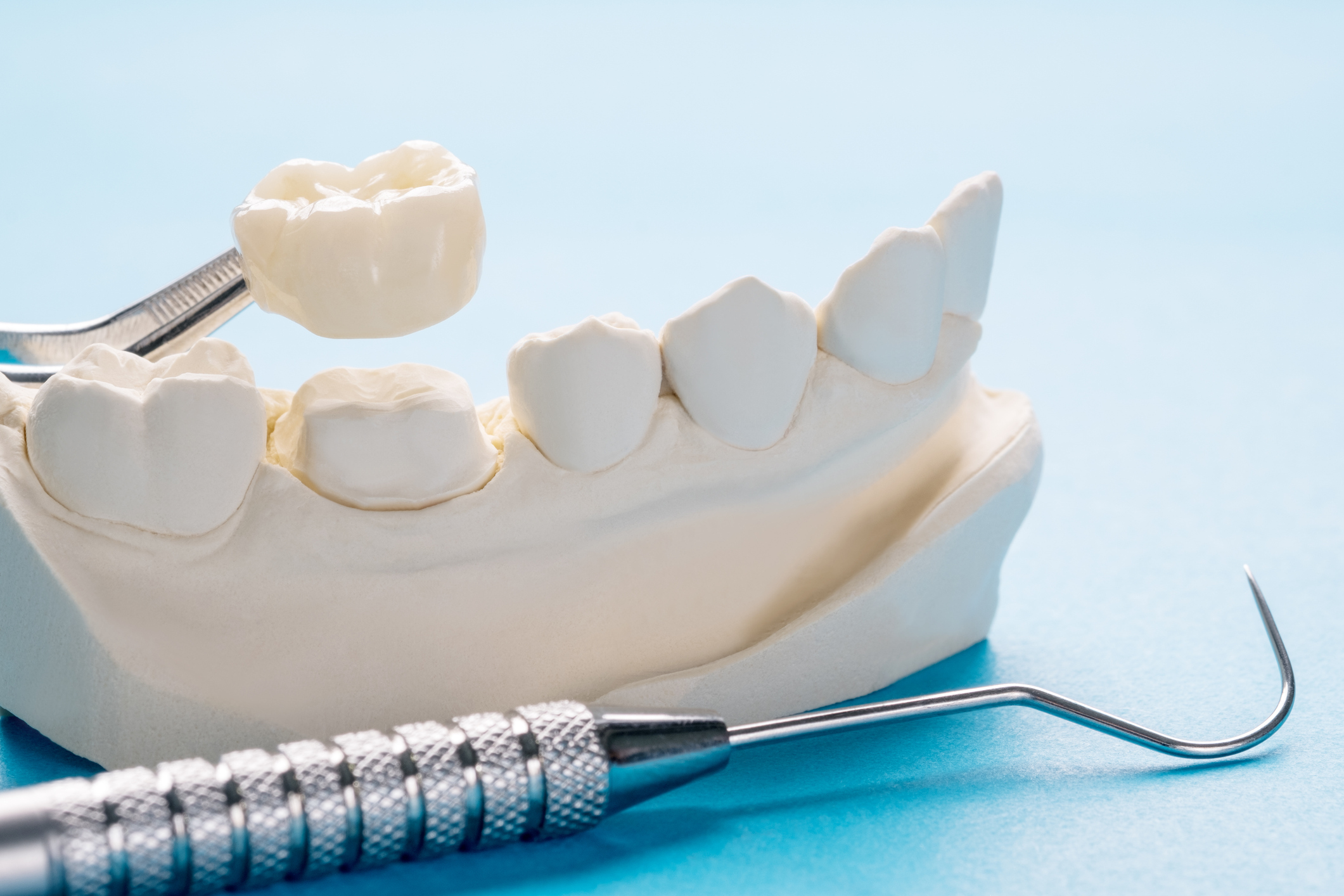What is involved in the treatment?
Firstly, a thorough clinical examination is conducted with radiographs by the dentist. The suitability for crowns is assessed and any preparatory work is carried out. Your dentist will also be able to advise on material choices, treatment sequence and any other concerns you may have.
At the second appointment, the teeth to be crowned are prepared. This involves reduction of the tooth size (usually under local anaesthesia) followed by a digital impression or mould of the prepared tooth. This trimming of the tooth is required to create space for the crown to be fitted. The scan is then sent to a laboratory where skilled technicians will create the crown. In the meantime, a temporary crown is made and fitted onto the trimmed tooth.
At the third appointment, the temporary crown is removed and the tooth surfaces cleaned. The completed crown is tried on the tooth for fit, harmony with the bite, and appearance. Finally, the crown is cemented onto the prepared tooth with dental cement.



